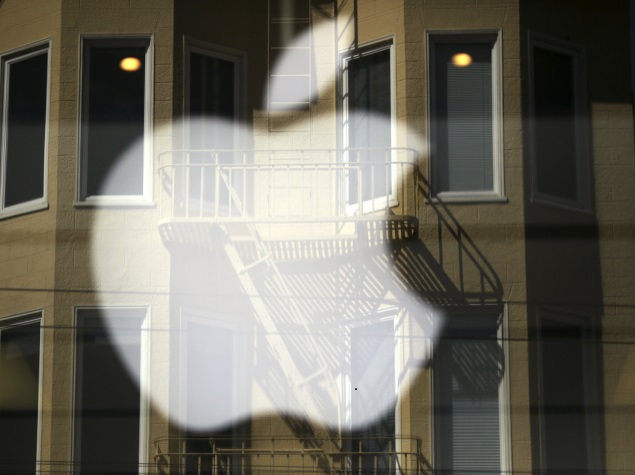Apple is unlikely to introduce new devices this week, the things that most excite customers and investors these days. But the company is expected to dive deeper into two new areas: connected health and the so-called smart home.
Along with operating system updates for mobile and desktop machines, Apple plans to introduce at its annual developers’ conference on Monday a new health-tracking app, according to a person briefed on the product, who spoke on the condition of anonymity because the plans were confidential. The app for mobile devices will track statistics for health or fitness, like a user’s footsteps, heart rate and sleep activity.
The health app will initially pull data from third-party fitness and health-monitoring hardware, the person said, but it will most likely be able to connect with a smartwatch that Apple is widely expected to release this year.
Apple is also expected to make an announcement about its efforts with connecting to so-called smart home devices, or home appliances that can be wirelessly controlled with a smartphone, like light bulbs, thermostats or door locks.
While many smart appliances already exist, Apple could introduce tool kits for developers that would allow apps to more easily communicate with home appliances, which could make the connected home systems simpler to set up for consumers.
Health monitors and smart home devices are still niche categories in the tech industry — while some devices are mildly popular, like Fitbit’s pedometers or Nest’s smart thermostat, they do not sell remotely as well as smartphones or tablets. But with a big brand like Apple pushing these categories, consumers could start to pay more attention.
“Apple always has the potential to turn a niche into a mainstream proposition when it enters a market,” said Jan Dawson, a telecom analyst for Jackdaw Research. “I think Apple’s entry could really transform both the health and fitness device space and the smart home market.”
Apple, led by Timothy D. Cook, will not be the first big company to make a bet on smarter health or home applications. In 2011, Google announced Android@Home, an effort to expand Android into home appliances. But Google made little progress with the project. Google’s acquisition of Nest, the smart-appliance maker, for $3.2 billion might revitalize that effort.
Samsung has also highlighted its efforts in the connected health space. At a media event in San Francisco last week, Samsung said it would provide developers, hardware makers and medical professionals with a platform that would push forward the idea of “intelligent digital health.”
Apple investors and fans who are clamouring for the company to introduce new hardware categories, like a so-called smartwatch or connected television, will probably have to keep waiting. On Monday, when the event’s keynote address is given, Apple is expected to focus on new versions of its mobile operating system for iPhones and iPads, known as iOS, and for the Mac operating system, OS X.
In the past, Apple’s week-long software developers’ conference was occasionally an arena for unveiling new hardware. But Apple more recently has reserved major hardware announcements for the fall and winter to aim for the back-to-school and holiday shopping seasons.
Apple is also expected to show the next version of its Mac operating system, OS X 10.10. The overall aesthetic will more closely resemble the “flat design” of Apple’s iOS 7, which introduced thinner typography and more saturated colours, and also removed textures that made some apps mimic real-life objects.
Reports surfaced a week ago that Apple would push into connected home devices, and details on Apple’s health app leaked months ago. Some software developers who kept up with the rumours had mixed reactions.
Julian Walker, a founder of the app startup FiftyThree, which is based in New York, said he was skeptical about smart-home-device makers jumping on board with Apple. He said Apple had been a tough partner for companies to work with because it imposed strict requirements on them.
For example, Apple began losing its grip on companies that made iPod speakers and docks when it switched the connector on its iPhone to a new port, the Lightning connector. Instead of making new hardware compatible with Lightning, many companies decided to develop accessories using a wireless connection, Bluetooth, that could be used by all kinds of hardware, including Apple and Android devices.
“They don’t have a reputation for being good partners,” Walker said.
Paul Haddad, the maker of the popular Twitter app Tweetbot, said he thought Apple’s expansion into health would drive more interest in health-monitoring applications and devices as a whole.
“An Apple-provided health application will bring a lot more attention to the benefits that tracking your health data on a smartphone can provide,” he said. “This means that the overall market for health-style apps will grow significantly.”
But Haddad was uninterested in the connected home because he did not think the category would attract many customers. “None of the existing smart home devices seem to have enough of a market,” he said. For example, Nest has sold at least 440,000 of its Protect smoke detectors — nowhere close to the millions of apps that developers hope to sell, he said.
John Casasanta, a developer of a best-selling iPhone camera app, Camera+ , panned the idea of Apple deeply integrating apps with the smart home. He said that smart home devices, like the $200 Philips Hue internet-connected light bulb set, were expensive and impractical, and it was just as easy to flip on the lights with a switch instead of controlling them with a smartphone.
“In the end, rich people are the ones interested in having their lights being turned on automatically,” Casasanta said. “The average person doesn’t want or need that. That’s what it really comes down to.”








